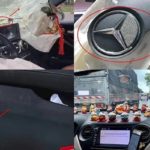Understanding the car registration process and procedures will make the registration process smoother and faster. This guide will outline the latest car registration procedures and requirements to save you time and effort.
1 Pay the Registration Fee
Step 1: Pay the registration fee for your car
Before registering your car, you must pay the registration fee. Simply take the necessary documents to the tax office in the district where the owner’s permanent residence is registered.
If the car owner is a foreign-invested company or enterprise, the representative must bring the documents and necessary papers to the tax department where the business license is issued/the city tax department to pay the registration fee for the new car.
 Pay the registration fee for your car
Pay the registration fee for your car
The procedure for paying the car registration fee is as follows:
– Submit the documents.
– Submit the registration fee declaration (2 copies)
– Receive the receipt for the registration fee.
| Type of Vehicle | Percentage Rate |
| Cars, trailers or semi-trailers pulled by cars, and similar vehicles. | 2% |
|
Passenger cars with 9 seats or less, paying the registration fee for the first time (Note: This rate can be adjusted higher in some cases, but not more than 15%) |
10% |
|
Cars that carry both passengers and goods with a capacity of less than 1500 kg and up to 5 seats, and VAN cargo cars with a capacity of less than 1500 kg, paying the registration fee for the first time |
60% of the registration fee for passenger cars with 9 seats or less. |
| Passenger cars with 9 seats or less, cars that carry both passengers and goods with a capacity of less than 1,500 kg and up to 5 seats, and VAN cargo cars with a capacity of less than 1,500 kg, paying the registration fee for the second time and onwards. |
2% (applicable nationwide) |
Step 2: Register your car and get a license plate
After paying the registration fee for your car, go to the road traffic police office under the Ministry of Public Security in the district where the owner resides to register your car. Bring the prepared documents, the declaration, and the receipt for the registration fee to complete the registration and license plate issuance procedures.
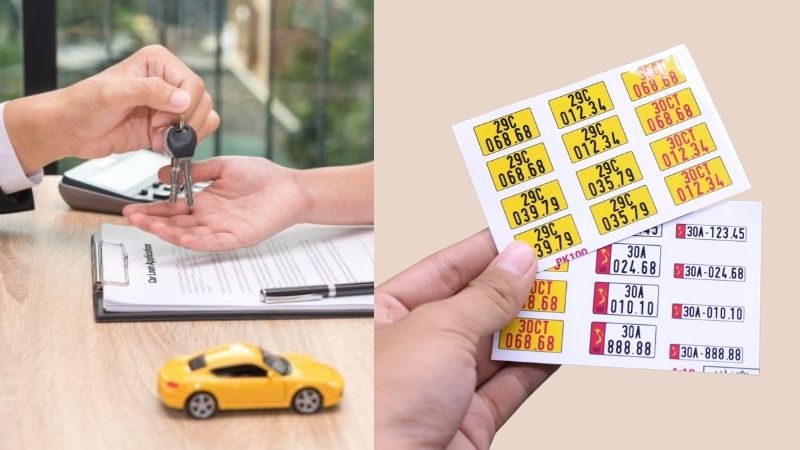 Register your car and get a license plate
Register your car and get a license plate
However, if the owner is an individual, organization, or foreign-invested enterprise, you need to bring the prepared documents, the declaration, and the receipt for the registration fee to the Road and Railway Traffic Police Department to register the car.
The procedure for registering a car and obtaining a license plate is as follows:
– Submit the car registration application to the competent authority.
– Inspect the car.
– Pay the car registration fee.
– Get the license plate for the car.
– Receive the two license plates: the long and short plates.
– Get a receipt for picking up the car registration certificate.
Step 3: Take your car to the Registration Office for inspection
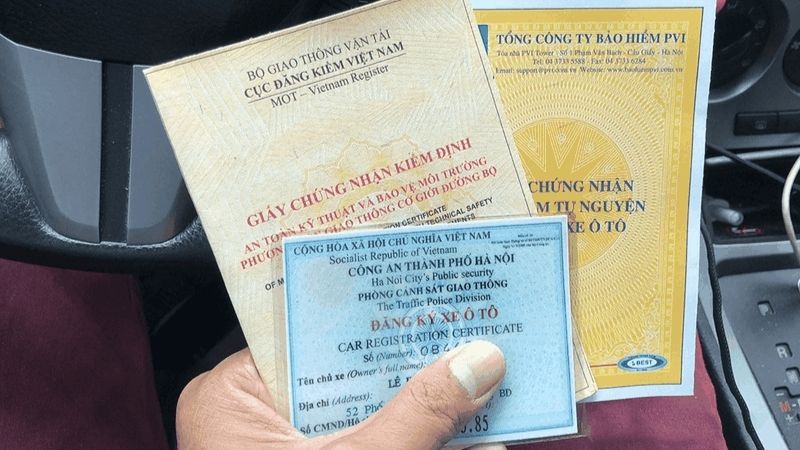 Take your car to the Registration Office for inspection
Take your car to the Registration Office for inspection
After paying the registration fee and registering your car, you need to take the documents and the required papers to the Registration Office for a car inspection.
The procedure for the car inspection is as follows:
– Submit the car inspection application.
– Pay the car inspection fee.
– Put the car through the inspection process.
– Pay the road maintenance fee.
– Receive the inspection certificate and stick the inspection sticker.
– Car registration procedure.
For reference: Number plate meanings according to feng shui.
2 Documents Required for Car Registration
Car registration is not difficult, but each step of the registration process requires different documents. Therefore, it is essential to prepare all the necessary documents accurately to avoid any interruptions and save time and effort.
The documents required for step 1 – paying the registration fee are as follows:
– Invoice for the car purchase (including two types of invoices: VAT invoice between the car dealer and the owner, and the purchase invoice between the car dealer and the car manufacturer).
– Vehicle quality inspection certificate provided by the manufacturer.
– ID/identity card of the owner (original and notarized copy within 6 months).
– Household registration book of the owner (original and notarized copy within 6 months)
– Business license/investment certificate/letter of introduction (if the owner is a company/enterprise) (copy with confirmation stamp of the enterprise director)
– Declaration of registration fee payment.
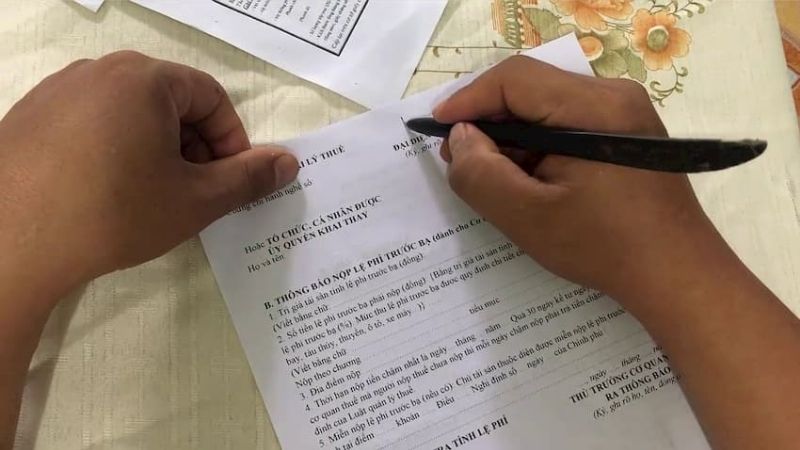 Pay the registration fee when registering your car
Pay the registration fee when registering your car
The documents required for step 2 – registering the car and obtaining the license plate are as follows:
– Declaration of registration fee payment and receipt from step 1.
– Car registration declaration.
– Invoice for the car purchase (including two types of invoices: VAT invoice between the car dealer and the owner, and the purchase invoice between the car dealer and the car manufacturer).
– Vehicle quality inspection certificate provided by the manufacturer.
– ID/identity card of the owner (original and notarized copy within 6 months)
– Household registration book of the owner (original and notarized copy within 6 months)
– Business license/investment certificate/letter of introduction (if the owner is a company/enterprise) (copy with confirmation stamp of the enterprise director)
The documents required for step 3 – taking the car for inspection are as follows:
– Car registration certificate or receipt for picking up the registration certificate.
– Chassis and engine number.
– Vehicle quality inspection certificate provided by the manufacturer.
– Vehicle civil liability insurance.
– Letter of introduction for registration in a transport unit (if the car is used for passenger transport)
For reference: Simple guide to car insurance.
3 On-Site Car Registration Procedure
According to current legal regulations, the car registration process consists of 5 steps.
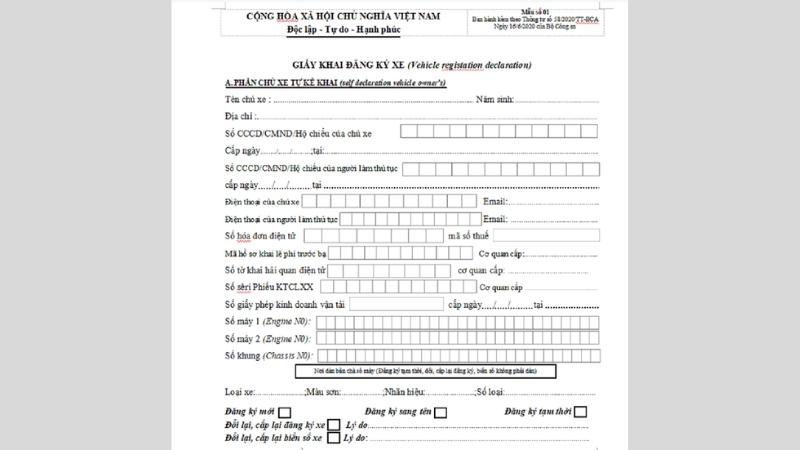 Car registration certificate as per Circular No. 58/2020 / TT-BCA (Source: National Public Service Portal)
Car registration certificate as per Circular No. 58/2020 / TT-BCA (Source: National Public Service Portal)
This step is crucial for the authorities to assess the quality of the vehicle being registered. The registration process includes specific steps. Immediately after the car passes the registration, the owner will receive the license plates and a receipt for picking up the car registration certificate.
The owner can go to the registration office to receive the car registration certificate within 2 working days from the date of receiving the complete application.
After obtaining the car registration certificate, the owner must purchase civil liability insurance from an insurance company as per legal regulations.
The car registration certificate, driver’s license, and civil liability insurance are the three documents that the owner must carry when driving.
4 Online Car Registration Procedure
Starting July 21, 2021, citizens can complete all paperwork, fees, and car registration procedures online nationwide.
How to do it: Log in to the National Public Service Portal => search for “Car Registration and License Plate Issuance” => choose the procedure “Car Registration and License Plate Issuance (implemented at the provincial level)” or go to the “Highlighted Public Services” menu and choose the procedure “Car Registration and License Plate Issuance (implemented at the provincial level)
Then, on the displayed screen, choose “Submit Online,” and follow these steps:
-
Domestically assembled cars: Serial number of the vehicle quality inspection certificate (number on the sticker of the vehicle quality inspection certificate for factory release) and the code of the registration fee file (the code of the completed registration fee file can be searched)
-
For imported cars: Chassis number and code of the registration fee file.
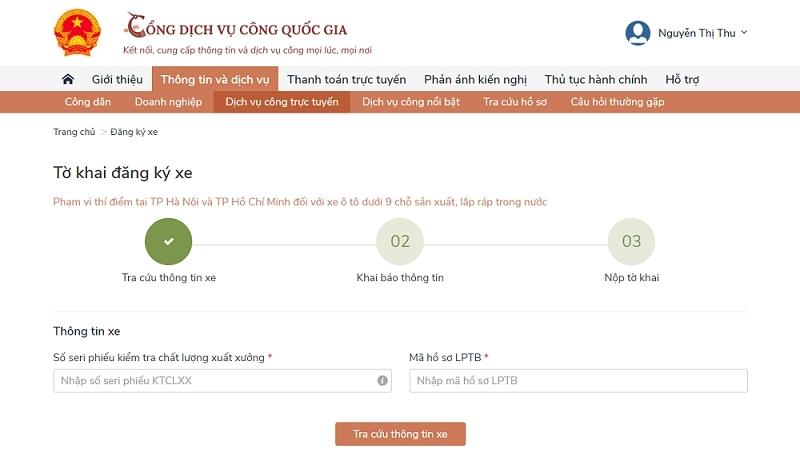 Enter vehicle information, including the vehicle quality inspection certificate and the registration fee code
Enter vehicle information, including the vehicle quality inspection certificate and the registration fee code
For reference:
Information related to the vehicle owner, vehicle, and registration fee is automatically retrieved from the National Public Service Portal accounts of the tax, registration, and customs data agencies. The registrant needs to check, confirm, and correct the information in case of any errors.
If the information is inaccurate, it must be checked and corrected by the owner (Source: National Public Service Portal).
 The vehicle owner needs to check and correct any errors
The vehicle owner needs to check and correct any errors
Step 3: Enter all the information, click on the statement of commitment, and click “Submit”. Then, the system will display a successful submission message along with the file code.
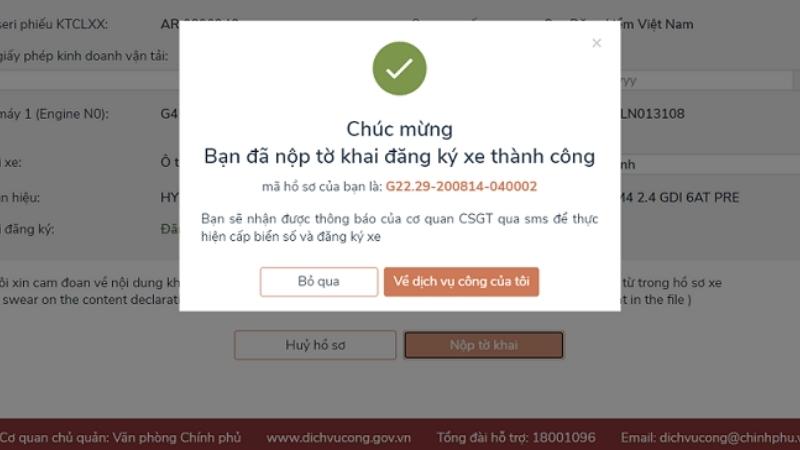 Screen displaying successful submission (Source: National Public Service Portal)
Screen displaying successful submission (Source: National Public Service Portal)
Thus, this article has provided a comprehensive guide to car registration procedures and requirements. We hope that this information will help you navigate the car registration process with ease.
The Ultimate Guide to Sponsoring Your Spouse’s Visa to Germany: A Step-by-Step Process
Introducing the ultimate guide to spouse visa sponsorship in Germany. Are you ready to embark on a journey of a lifetime with your significant other? We are here to ensure a smooth and hassle-free process. Discover the essential steps and requirements to bring your spouse to Germany, and join us as we explore this exciting path together.

























